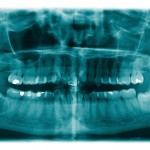
Dry Socket is a complication that can follow tooth extraction occurring in 1%- 5% of routine extractions. It is more common following the extraction of third molars with rates of between 1% – 37% reported. The aetiology of dry socket (alveolar osteitis) is not fully understood and a number of factors have been implicated including surgical trauma, surgeons experience, perioperative patient stress factors and focal fibrinolytic activity. A number of additional risk factors including smoking, age, gender and oral contraceptive use, menstrual cycle and the use of antimicrobial drugs and mouth rinses have also been suggested. The aim of this review was to assess the association between oral contraceptive use and the development of dry socket.
Methods
Searches were conducted in PubMed, The Cochrane Library and Science Direct. Prospective controlled clinical trials where oral contraceptive (OC) use was examined as a risk factor for dry socket were considered. Two reviewers independently extracted data and assessed study quality using the Newcastle–Ottawa scale (NOS). The pooled risk ratio (RR) with 95% confidence interval (CI) was calculated using fixed-effects or random-effects model analysis.
Results
- 12 articles reporting 16 studies were included.
- The quality of the studies was considered to be moderate.
- The incidence of dry socket was significantly higher in those using OCs.
- Risk ratio = 1.80 (95% CI; 1.33–2.43) [random-effects model].
Conclusions
The authors concluded: –
The present study indicates that the use of OCs may promote the incidence of dry socket in females following impacted mandibular third molar extraction. Based on the findings of this study, a cautious attitude to impacted mandibular third molar extraction procedures in females taking OCs should be adopted in clinical practice.
Comments
The authors have searched three large databases and the available studies were considered to be of moderate quality. However, the authors did acknowledge that several of the studies did not report the age of the patients and matched controls were not used in a number of studies and the numbers of studies involved are not provided. The authors also note that some of the studies only involved small numbers of extractions and that the diagnostic criteria for dry socket may have changed over the period covered by the included studies 1974- 2010. So while this review provides a good overview of the currently relevant studies, the quality of the studies mean that the impact of OCs on the incidence of dry socket does need further clarification.
Links
Xu JL, Sun L, Liu C, Sun ZH, Min X, Xia R. Effect of oral contraceptive use on the incidence of dry socket in females following impacted mandibular third molar extraction: a meta-analysis. Int J Oral Maxillofac Surg. 2015 Jun 23. pii: S0901-5027(15)00211-8. doi: 10.1016/j.ijom.2015.05.017. [Epub ahead of print] Review. PubMed PMID: 26116066.
Dental Elf -15th Feb 2012 – Traumatic extraction carries a high risk of a painful dry socket

Excelente!!
Increased incidence of dry socket with oral contraceptive use? http://t.co/2o8Xwy9tdq
Dry socket – oral contraceptives may increase incidence https://t.co/pvuf8eux95 via @sharethis
Dry socket risk increased with oral contraception use http://t.co/2o8Xwy9tdq
Anyone who has experienced “dry sockets” after the extraction of wisdom teeth will tell you how painful it is. If… http://t.co/xKD3r4tI5G
Oral contraceptive use increases risk of dry socket http://t.co/2o8Xwy9tdq
More dry sockets with oral contraceptive use http://t.co/2o8Xwy9tdq
Don’t miss – Dry sockets – oral contraceptives may increase incidence http://t.co/2o8Xwy9tdq